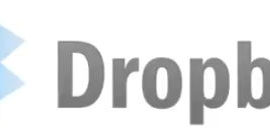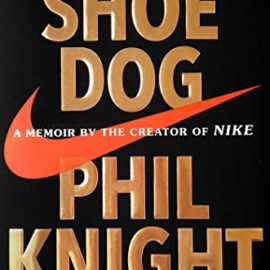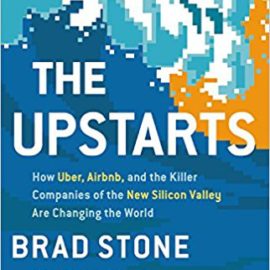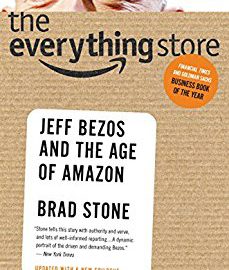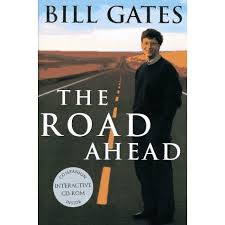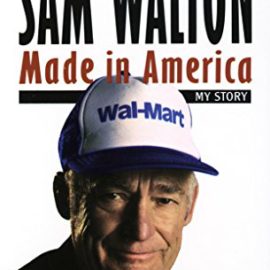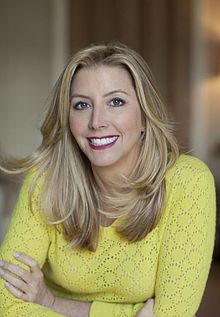

Sara Blakely is founder and sole owner of Spanx, an underwear and shapewear maker with annual sales of over $250 million (2014). Her story has a few intriguing points:
- starting by solving her own problem
- starting with no background in running a business or in garment manufacturing
- keeping her idea secret until it was mature
- hustling to get her first sales through Neiman Marcus
Tackling failure
- Born in 1971 in Florida
- Her father taught her not to fear failure. Would ask her and her brother what they’d failed at that week, and if they didn’t have an answer, he’d be disappointed at their lack of pushing past their comfort zones
- If they had failed, he’d high-five them and ask about what happened, and what they got out of it anyway
- Even when building Spanx, she never thought she would fail
The birth of the idea, while selling fax machines
- Graduating from Florida State, Sara Blakely wanted to be a lawyer (her father was a lawyer) but took the LSAT twice and did terribly
- She started at Walt Disney as a greeter, then moved to selling fax machines door to door around 1993
- This is when she started wearing hosiery and wanted to wear some thin fabric pants, but had a lot of problems with seeing panty lines underneath. The shapewear and girdles that existed were thick and overdone
- So she cut the feet of the control-top pantyhose to make her own shaping solution. Unlike normal pantyhose, this pantyhose wasn’t meant to be seen. This was the birth of her idea – solving her own problem. Around 1998
Starting the company with no experience, step-by-step
- From her sales, Sara Blakely set aside $5,000 to start the company with
- First, she wanted to establish that the idea was unique and protectable. She researched pantyhose patents after work for a week and a half at the library, until someone told her there’s a website uspto.gov where she could search for this info. Here she realized someone hadn’t patented this already
- Then she looked for whether there was a market appetite. She went to Neiman Marcus and asked a sales associate if anyone would possibly want a footless pantyhose to wear under pants. The associate said yes, a lot of her customers actually make their own solutions like this! So she knew there was demand
- Now she had to make the product. She had never sewn, had never taken a business class, and didn’t know anyone in the garment industry. So she tried to make her own prototype with paper clips and hosiery, but didn’t get far. She needed a manufacturer
- She took a week off selling fax machines to visit North Carolina, where hosiery manufacturing plants were. Most weren’t interested in her idea – they didn’t get the concept of pantyhose that’s not meant to be seen – and dismissed her lack of stature. The owners were also predominantly men.
- It took multiple visits and rejections, until finally the Highland Mills called her and said he’d do it. He had 3 daughters and ran the idea by them – they said it was a real problem. He still didn’t get it, but he liked her enthusiasm
Keeping her idea secret until it was mature
- Sara Blakely kept her idea secret for a year while she worked on the early steps. She didn’t tell people who weren’t involved with helping it get off the ground (like lawyers)
- She believes ideas are most vulnerable in their infancy, and that like a new seedling, they can be crushed by too much backlash
- “If it’s such a good idea, why hasn’t anyone done it yet” or “Once you get off the ground, you’ll just get crushed by a giant competitor” are dangerous common refrains. They come from a place of caring, but they’re general aphorisms that apply to every new company – and thus are practically unhelpful.
- You have to spend your time making progress, not defending your idea to people. If she’d heard those complaints when she came up with the idea, she’d still be selling fax machines.
The next major steps to launch
- Patent attorneys cost $3-5k, so she learned how to write a patent herself, and her mother sketched the figure. The last thing she needed was the claims (really the most important part of the patent) and she got a lawyer to do it for $750.
- The name Spanx: her thinking was that some of the most iconic name (Coca-Cola, Kodak) all had a K sound. Comedians also said the K sound tends to make the audience laugh. While driving one day, she came up with the word Spanks. It had to do with the rear end (just like the product), it was kind of funny, kind of naughty, and it all worked. She made a final change – made up better words stick better, and they’re easier to trademark, so she chose Spanx. (A pattern continued by an offshoot brand, Assets)
- Her original 2000 patent: “Pantyhose under garment”
Getting her first deal with Neiman Marcus
- She kept calling Neiman Marcus, trying to get to the hosiery buyer. Finally she got through and told her, “I’ve invented a product that will change the way your customers wear clothes. If you give me 10 minutes of your time, I’ll fly to Dallas and show you.” She got it
- She went to the meeting and faced an impeccably dressed woman. Sara showed up with her prototype in a Ziploc bag, the packaging idea done on her friend’s computer, and her lucky red dingy backpack.
- In the middle of the meeting, Sara knew she was losing the buyer’s interest. She said, “you know what, come with me to the bathroom. I want to show you the before and after.”
- the buyer got it. She said she’ll put it in 7 stores to see how it does
- “Did you feel like you’ve made it at this point?” Sara: “No – this is where the work starts.”
Hustling to raise first sales
- Sara Blakely knew this was a make or break moment. If she could get sales up, Neiman would increase their orders and broaden distribution
- She called all her friends in the locations of the 7 stores and reimbursed them when they bought Spanx. She went through every contact she knew, even people she hadn’t contacted since the 4th
- She only had a pocket in the hosiery aisle, not even a whole row. So she went to Target, got display stands, and put Spanx near checkout registers around the store. Everyone at Neiman assumed a higher-up had approved the stands, so they stayed there
- She showed up to a store and would demo It, 9-6 everyday in the stores
Lighting fuel for growth
- Spanx has never had formal ads – they’ve been through word of mouth and other promotional methods
- In 2000 (just 2 years after starting) they sent a pair to Oprah. To their surprise, Oprah picked it as her favorite product of the year in 2000, saying she gave up wearing underwear and only wear Spanx.
- “I quit my day job selling fax machines on Oct. 14, 2000, and Oprah called two weeks later. I was on her show in November.”
- In 2001, she went to QVC. Others said, “don’t go on that low rent channel, you’re at Neiman Marcus and you’ll tarnish your brand.” She knew that she could control the message on the show. She sold 8,000 pairs in 5 minutes, when each day selling 35-70 pairs a day was already big
- By the second year, Spanx had made $10 million in sales
The company now
- Sara still owns 100% of the company. She had inbound investor interest but never took a deal
Sources:
The Best Things I Learned from Sara Blakely, Spanx Founder

